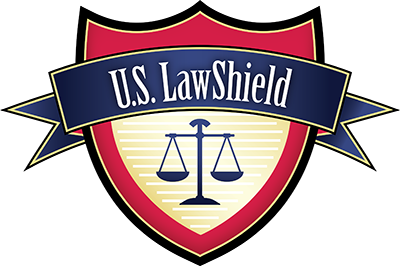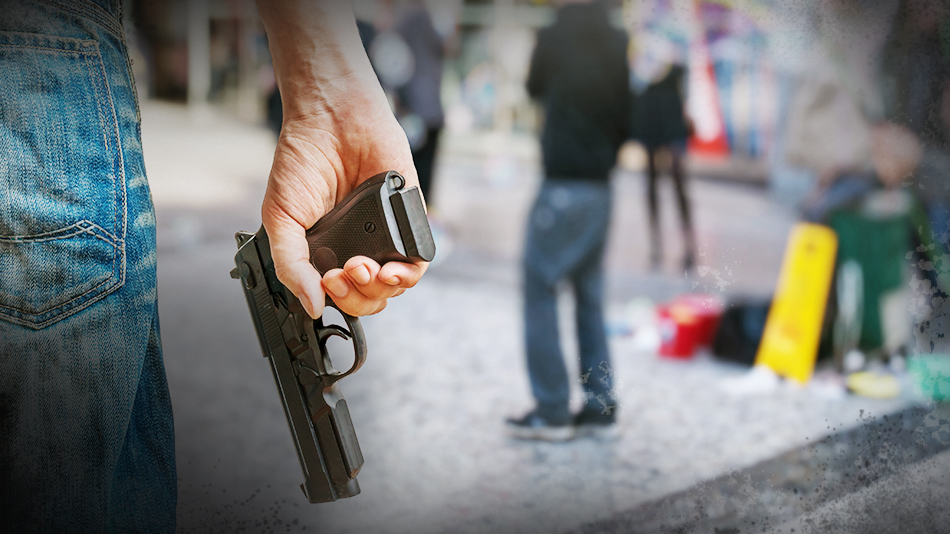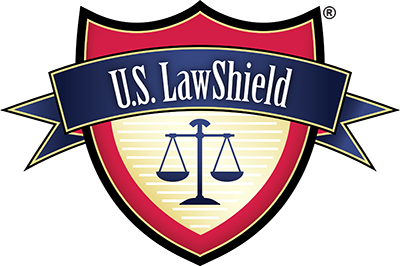
To live is to face risk. That risk can manifest in many ways, from unpredictable economic downturns to unforeseen personal challenges, and sometimes even physical threats to our wellbeing. Recognizing, understanding, and mitigating, risk is the end goal of those interested in personal protection. When you choose to take responsibility for your personal safety, it’s important to remember that your preparations aren’t about living a more fearful existence; they’re about leaving fear behind so you can focus on living your life to its fullest.
By equipping yourself with the knowledge and tools necessary to defend yourself, you can better navigate the intricacies of the modern world. It’s even possible that the quiet confidence that stems from knowing every reasonable precaution has been taken might even help ensure that you’re never targeted by a criminal in the first place.
Enjoying this content? Find out how you can get more sent straight to your inbox.
What Is Risk?
Life’s journey is a series of decisions, choices, and encounters with the unforeseen. At the very heart of this unpredictability lies risk. That risk, intrinsically, is the potential for a decision or action to lead to an outcome that deviates from what we expect or desire. In general, risk is the possibility of a negative outcome. These negative outcomes can vary wildly in severity.
For instance, there’s a risk that you might break a shoelace the next time you tie your shoes. While breaking a shoelace is a negative outcome, in most instances the severity of impact that a broken shoelace has on your life is negligible. Every time you drive or ride in a car there’s also a risk that you might be involved in a fatal motor vehicle accident. Unlike the shoelace, this is as severe as it gets when it comes to impacting your life. The broken shoelace and the fatal accident are both the same thing, risks associated with an action that you might take, what differentiates them is the severity of the potential negative outcome if either incident occurs.
There isn’t a single decision that can be made that doesn’t have some sort of risk attached to it. Personal protection is all about narrowing the focus down to events that threaten your physical safety. These events could stem from environmental factors, unexpected confrontations, or even unintended personal actions. While some risks may result in negative outcomes that are mere inconveniences, others could jeopardize your very existence. The primary endeavor of personal protection is to understand and identify these physical risks. You should try to have an accurate idea of the likelihood of their occurrence, be able to assess the potential severity of the negative outcome(s) inherent in any activity, and do what you can to decrease the likelihood of a negative outcome while also taking steps to lessen the potential impact.
What Is Risk Mitigation?
Before you can protect yourself from a risk you have to acknowledge one clear fact: the possibility of a negative outcome occurring exists. It’s impossible to purposefully and knowingly take actions to protect yourself if you don’t believe there’s anything to be protected from. Instead, by accepting that risks are a part of life, you can begin to take reasonable steps to deal with them.
Risk mitigation is simply about recognizing risks before a negative outcome occurs and then making plans to avoid, handle, or reduce the overall impact of the negative outcome. Think of it like looking both ways before crossing a street. You recognize there might be a car coming and that the car could hit you (the risk), so you check both ways before stepping into the street (the risk mitigation).
Simply, risk mitigation is about:
- Seeing the potential negative outcomes of a decision or behavior
- Making choices that lessen the likelihood of said negative outcome
- Giving yourself the physical and mental tools needed to lessen the severity of the outcome if avoidance fails
The Importance of Risk Mitigation
Recognizing risks and then taking steps to protect yourself from the negative outcomes associated with them isn’t just a smart move—it’s a foundational approach to navigating life more confidently and safely.
- Leave Fear Behind – The clarity that comes from acknowledging risks and actively preparing for them is one thing that helps give people peace of mind. Knowing you’ve done your part to be ready for what might come can go a long way towards making certain possibilities less frightening.
- Sooner, Not Faster, Decision-Making – When you’re aware of the potential negative outcomes of any given situation, and have a game plan in place, your choices become sharper and more informed. In fact, inside the context of self-defense many decisions can be made ahead of time, so that instead of having to create a solution in the heat of the moment, you can simply select a pre-determined course of action that’s appropriate for the situation you find yourself in. This sort of pre-need, recognition primed, decision-making is the same sort of mental model that U.S. fighter pilots have used for decades to prevail in aerial combat.
- Safety First – Taking an interest in personal protection will rarely just impact you alone. The steps you take for your own safety often ripple out, benefiting the people around you. Whether it’s sharing what you’ve learned or simply being a role model in preparedness, your understanding of risk mitigation can help keep your social and familial circle safe.
- Preventing Bigger Issues – Sometimes, the small steps you take in advance can help avoid more significant challenges down the road. Recognizing risks and acting on them can save you from hardships that could have otherwise been sidestepped. For instance, becoming a member of U.S. LawShield® can help you avoid devastating financial hardship in the event you’re forced to defend yourself.
Defense Strategies for Controlling Physical Risk
Once you understand the importance of risk mitigation, it’s time to delve into reasonable strategies you can employ to help keep yourself safe. These strategies don’t just protect you but also equip you to face challenges head-on.
Situational Awareness – One of the foundational defense strategies most people discuss involves being keenly aware of your surroundings. Situational awareness means more than just knowing what’s going on around you though. In addition to paying attention to your surroundings, you need to have the knowledge necessary to understand the significance of whatever it is you’re seeing as well as the ability to forecast how this information, and your responses to it, could impact the situation.
Training and Skill Development – There’s a difference between knowing what to do and being able to do it well under stress. Whatever method of protecting yourself you’ve selected, whether it’s a martial art, pepper spray, or a firearm will require regular training. Skills, once acquired, need to be regularly practiced so that they can be useful in a chaotic situation.
Avoidance Is Key – It’s often said that the best fight is the one you avoid. By recognizing potentially hazardous situations or individuals, you can often sidestep them. Whether it’s avoiding certain areas after dark or steering clear of visibly hostile individuals, avoidance is a powerful tool.
Understand the Law – Knowing the legal requirements for, and the implications of, self-defense is paramount. Trusted legal resources, such as the Independent Program Attorneys that every U.S. LawShield member has access to, can provide invaluable guidance. Defending yourself should never cost you everything, and that’s why planning for the aftermath of self-defense is a crucial step towards being better prepared.
Your Life, Your Terms
Whether someone wants it to or not, life, with all its unpredictability and inherent risks, requires some level of vigilance and proactive measures. Everyone already takes steps to mitigate certain risks in their life, be it smoke detectors in the home to guard against fires or putting the phone down while driving to stay focused on the road. A holistic and reasonable view of self-defense is no different than other sensible steps someone might take to keep themselves safer. This comprehensive approach to personal protection isn’t rooted in fear but in the relentless pursuit of a life lived on your terms, where you’re both the protector and the protected and where you can leave fear behind.
Frequently Asked Questions
What are the risks of self-defense?
While self-defense may help mitigate the risks of being injured or killed by a criminal, it does come with its own risks. There may be social, financial, or professional consequences if you’re forced to defend yourself. Additionally, defending yourself when it’s not legally justifiable to do so can carry severe legal penalties.
What are 3 lines of defense?
There aren’t three universally agreed upon lines of defense and context will change the answer somewhat as not every situation is the same. Three lines of defense for the private citizen might be considered as: Awareness, Avoidance, and De-escalation, though it’s important to again note that there’s no universally agreed upon standard.
What is an example of a defense strategy?
A defense strategy is any high-level behavior you engage in to reduce your risk of physical harm. For instance, making the decision to be less confrontational and to never engage unless forced to, even when provoked, would be a defense strategy utilized to attempt to avoid the potential negative outcomes that can stem from an altercation that escalates.
What is the most effective way of controlling risks?
The most effective way of controlling risk is to first accurately identify that it exists, then educate yourself on the potential negative outcomes attached to that risk. Once you’ve done that, you can take reasonable steps based off recognized best practices to mitigate the risk to a level that’s acceptable to you. Additionally, it’s important to examine whether you can opt out of a risk altogether by modifying your behavior to avoid it entirely.
Your Protection Starts Here!
The information provided in this publication is intended to provide general information to individuals and is not legal advice. The information included in this publication may not be quoted or referred to in any other publication without the prior written consent of U.S. LawShield, to be given or withheld at our discretion. The information is not a substitute for, and does not replace the advice or representation of a licensed attorney. We strive to ensure the information included in this publication is accurate and current, however, no claim is made to the accuracy of the information and we are not responsible for any consequences that may result from the use of information in this publication. The use of this publication does not create an attorney-client relationship between U.S. LawShield, any independent program attorney, and any individual.





Leave A Comment